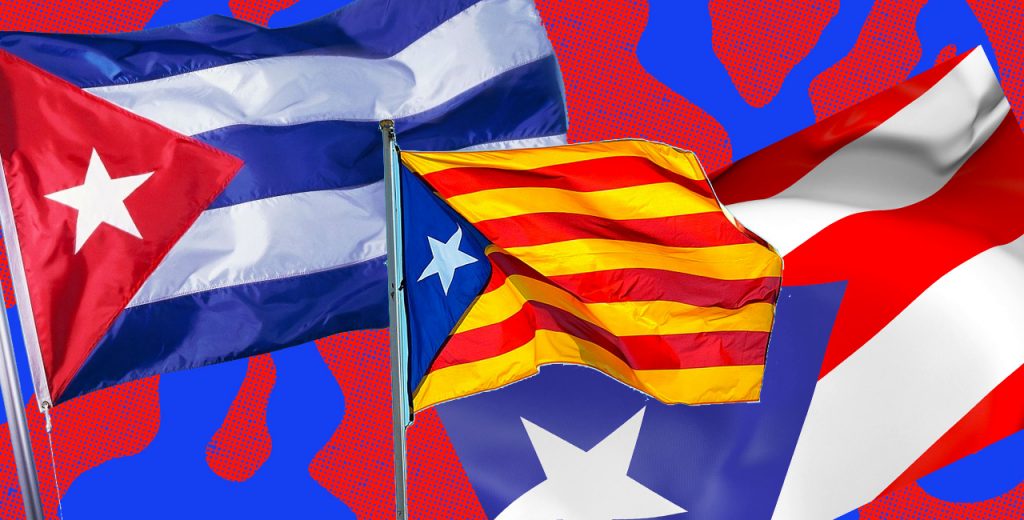Catalonia’s independent movement has made headlines all over the world in recent years. The fight escalated in 2017 when the Catalonian parliament declared unilateral independence not recognized by the central Spanish government. Catalonia’s push for independence is now increasingly visible and inevitable, and one of its flag has become the key symbol in the fight, often seen in the bleachers at the Camp Nou Stadium – home of FC Barça – and adorning balconies.
But the iconic flag actually draws inspiration from the independence movements in two Caribbean nations – Cuba and Puerto Rico.
In the late 19th century, the two islands were in the middle of a fight for independence from Spain. Cuba held a three-year-long war that ended in December 1898 after the end of the Spanish-American War, while Puerto Rico gained its autonomy from Spain a few months before the United States invaded the island. Both Cuba and Puerto Rico remained territories of the United States after the Spanish-American War, but only Cuba was able to gain its formal independence in 1902. Today, Puerto Rico remains a US colony.
Still, both movements had close ties. Puerto Rican poet and activist Lola Rodríguez de Tió wrote in a poem, “Cuba y Puerto Rico son de un pájaro las dos alas.” This explains why their flags are so similar. Both flags came to symbolize the independence movements on the islands, with Cuba only officially adopting the banner when the country gained independence in 1902.
For Puerto Rico, the journey took much longer and came with persecution. The flag was first hoisted in 1897 during an insurrection in the town of Yauco. When the United States invaded the island a year later, the flag remained a symbol of the hushed independence movements and regained popularity during the 1930s and 1940s when the Nationalist Party – led by Pedro Albizu Campos – adopted it as its flag. The Gag Law of 1948 – introduced by the United States government – prohibited the possession and display of Puerto Rican flags in the island with the threat of criminal charges.
These movements inspired Catalonian independence activist Vicenç Albert Ballester to adopt the triangle and star seen on Cuba and Puerto Rico’s flags in 1918 to symbolize freedom from Spain. Ballester put the “estelada”– as it’s known – on Catalonia’s original flag, which consists of four red lines on a yellow background. In turn, Francisco Franco’s dictatorship (1936 to 1975) prohibited the flag. All Spanish independence movements – including Basque Country’s – saw suppression during this era.
While Catalonia’s parliament declared its independence, the movement continues to struggle to get the Spanish government to recognize the still province as an independent nation. But they continue to hail their flag high as a symbol of freedom.




